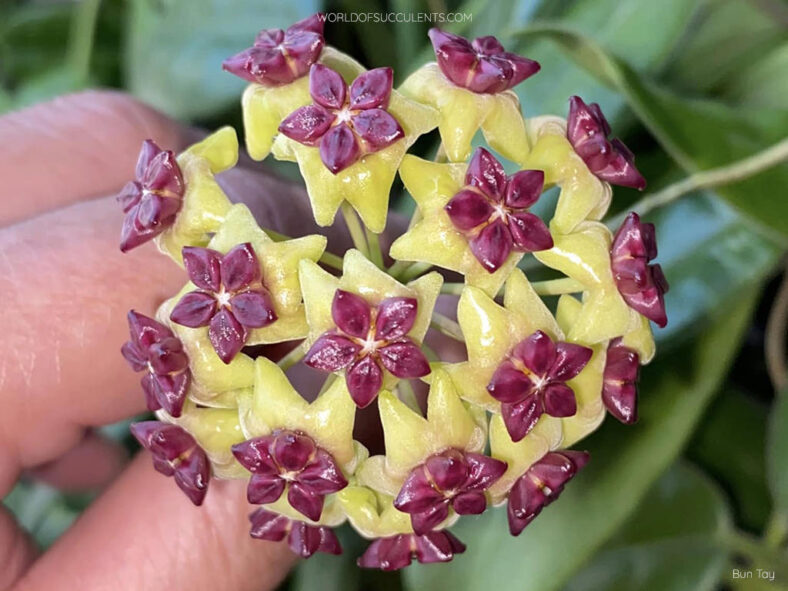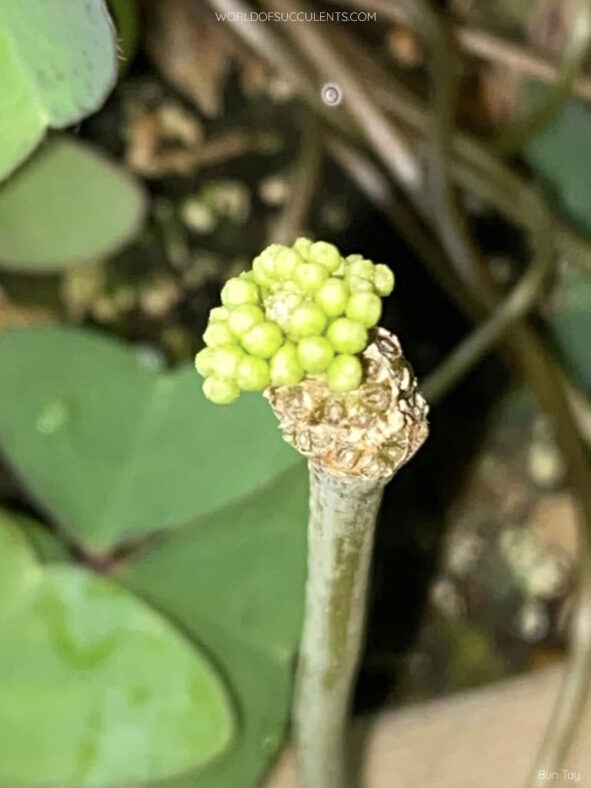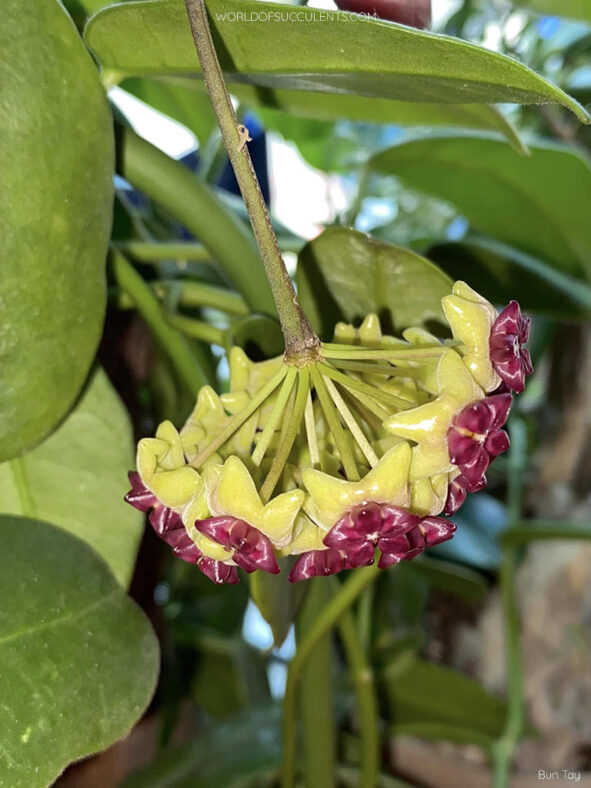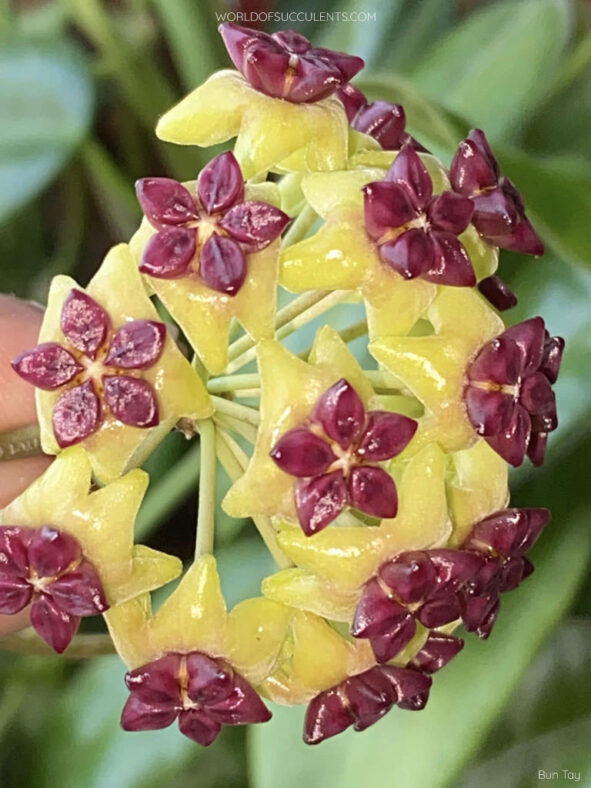Hoya cinnamomifolia is among the largest species in its genus. It was first described by William Jackson Hooker in 1848.
Scientific Name
Hoya cinnamomifolia Hook.
Synonym(s)
Hoya coccinea
Scientific Classification
Family: Apocynaceae
Subfamily: Asclepiadoideae
Tribe: Marsdenieae
Genus: Hoya
Etymology
The specific epithet "cinnamomifolia" (pronounced "sin-nuh-mom-ih-FOH-lee-uh") means "having leaves like cinnamon" and refers to the resemblance of the leaves of this species to those of Cinnamomum verum.
Origin
Hoya cinnamomifolia is native to the island of Java in Indonesia. It grows as an epiphyte in tropical forests.
Description
Hoya cinnamomifolia is a twining plant with slender stems that bear large, dark green leaves with prominent lighter veins. The stems can grow up to 10 feet (3 m) long, while the leaves can measure up to 6 inches (15 cm) long and 2.4 inches (6 cm) wide.
During the summer, Hoya cinnamomifolia produces attractive flowers with a lime green corolla and a bright burgundy corona. The corolla lobes are bent backward, while the corona protrudes outward and has a flat surface. The flowers are arranged in umbels of up to 30 blooms and can last for as long as 7 days. Each flower can reach a diameter of about 0.8 inches (2 cm).

How to Grow and Care for Hoya cinnamomifolia
Light: This plant prefers bright, indirect sunlight indoors. Although it can tolerate lower light levels, it may become weak and leggy if the light is too low, producing fewer leaves and flowers.
Soil: Well-draining soil that provides excellent aeration and does not hold too much water is most important for growing a healthy plant.
Temperature: Hoya cinnamomifolia thrives in hot and humid climates, so keep it away from drafty windows and doorways during the colder months. It grows best in USDA Plant Hardiness Zones 11a to 11b, with average minimum winter temperatures ranging from 40°F to 50°F (4.4°C to 10°C).
Watering: This plant is sensitive to overwatering. Soak the soil thoroughly during the spring and summer, but allow it to dry out before watering again. Otherwise, you will increase the risk of root rot, and your plant will not be happy. It is relatively dormant during the fall and winter and needs only moderate watering.
Fertilizing: While Hoya cinnamomifolia is not a particularly heavy feeder, it can benefit from high-potassium fertilizer diluted to half strength every two weeks during the growing season.
Repotting: As an epiphyte, this plant has shallow root systems and does need a deep container. It also does not require frequent repotting. It prefers to be slightly rootbound. Repot the plant in spring only if it has outgrown its container.
Propagation: Although layering is the easiest method, propagation of Hoya cinnamomifolia by stem cuttings is the most popular method. Leaf cuttings can be more challenging, and starting the plant from seeds is the simplest yet most time-consuming method. For best results, take cuttings only when the plant is actively growing, and sow the seeds in spring and summer.
Learn more at How to Grow and Care for Hoya.
Toxicity of Hoya cinnamomifolia
Hoya cinnamomifolia is considered non-toxic and safe around kids and pets.
Links
- Back to genus Hoya
- Succupedia: Browse succulents by Scientific Name, Common Name, Genus, Family, USDA Hardiness Zone, Origin, or cacti by Genus
Photo Gallery
Click on a photo to see a larger version.


